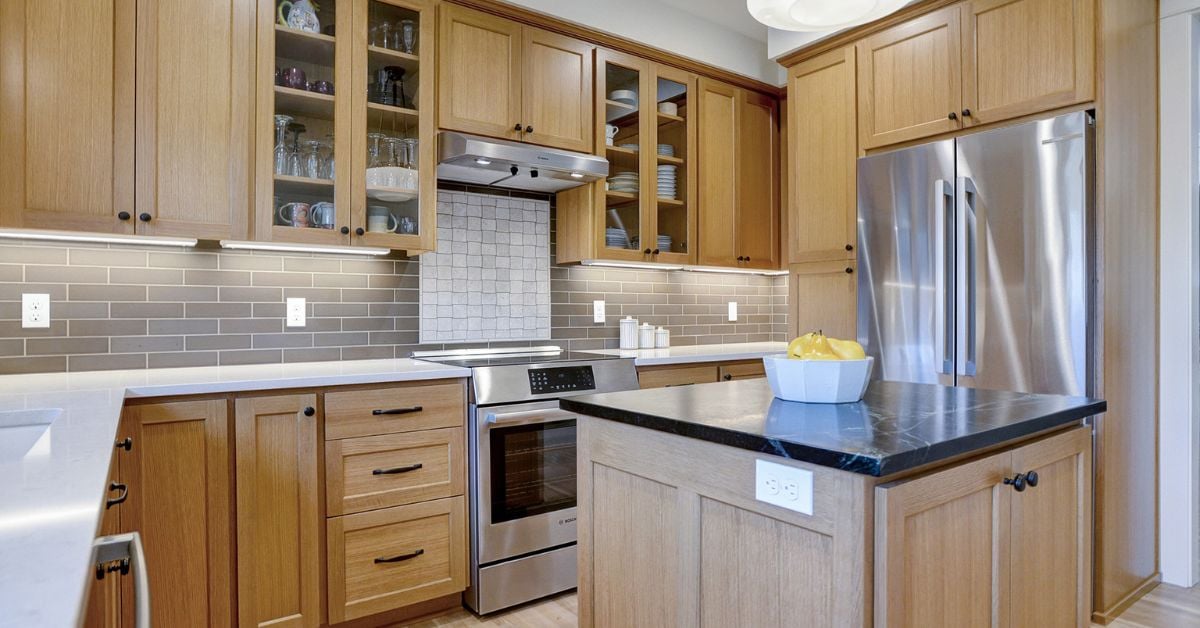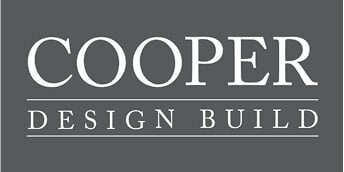Deciding to do a home remodel is one of the biggest decisions you can make as a homeowner because of the commitment involved – of finances, time, energy, and disruption to your daily routine. Because of this, it’s essential that you are equipped with as much information as possible to make the right decision for you, your family, and your home. Below you’ll find information on common mistakes to avoid when remodeling your home, the difference between a design-build firm and a remodeling company, and misconceptions about the design-build remodeling process.
 Jump To:
Jump To:
- Design-Build Firms vs. Traditional Remodeling Companies
- Common Mistakes to Avoid During Design-Build Remodeling
- Steps of the Design-Build Process
- Misconceptions about Design-Build Remodeling
Design-Build vs. Traditional Remodeling
If you are considering a major home remodel project, you've likely heard about a concept called design-build that could offer some advantages. What are the differences between contracting with a traditional Portland remodeling company and hiring a Portland-based design-build company to remodel your home?
Let’s start with the two approaches. The traditional approach to getting your major remodeling project built is to hire an architect or designer to create the design and the plans for your remodel. You then put your project out for bids from builders and select a contractor based on price and your research into the builder’s work. A design-build company, as the name implies, combines the design of your project — the architectural, engineering, and interior design work — with the actual general contractor function. You will meet with the team to communicate your vision for your home remodel, work with the designers on the overall scope and specific details, and agree to a construction contract. The design-build team typically will have a Project Manager who then oversees the big picture and makes sure the work is progressing according to the plans.
Finding an architect or designer to visualize and design your project, and then separately selecting a builder, can take longer, cost more, and involve more work on your part. You might also have to get involved in choosing subcontractors. Using the design-build approach can save you time and money because the process is streamlined and the designers work with the production team to avoid adding elements that are possible or feasible in your home. Quality control is under one roof and the design-build company holds full responsibility for the project, minimizing finger-pointing between the two sides if the job hits a snag.
A design-build company gives you one point of contact, and the company’s designers and construction team work together throughout the project, saving you the trouble of coordinating between the two aspects of the project. Also, the design-build architect knows the builder and won’t design a project that can’t be built.
Whichever model you choose — design-build or traditional architect/designer and builder — you need to do your homework before selecting a company or companies to transform your dreams into reality
Common Mistakes to Avoid When Working with a Design-Build Remodeler
Working with a design-build remodeler helps you avoid construction mistakes, but your own preparation, planning, and thoughtful action are important to keep your project on track. Avoid building mistakes by learning about common pitfalls of remodeling.
#1 Not Deciding on a Firm Budget
Early on, you’ll need to figure out how much you can spend on the project and where the money will come from. Do you have savings and other assets you can use? How much equity do you have in your home to borrow against? How much of a loan payment will your budget handle?
It’s also important to reduce the amount of scope creep during your project. Hiring a contractor for a “small update” can balloon into a massive whole-home renovation if you and your design-build professionals don’t plan properly. Any remodeling budget should include a 10 percent to 20 percent contingency to accommodate unexpected problems or modifications, as well as a budget for upgrades and change orders during the process.
#2 Changing Your Mind
Tweaking a few things here and there is normal during a home remodel, but completely changing your mind about the design – adding a full wine cellar to the basement or moving the laundry room to a different level -- is a costly mistake. So is making wholesale changes to your materials choices, especially if the job is well along in the build stage. About two-thirds of contractors surveyed say that changing your mind once construction has begun is the biggest, most costly mistake you can make when remodeling.
#3 Choosing the Cheapest Contractor
The most economical choice is almost never the best option. Sometimes the lowest bid means the contractor will be cutting corners on quality and materials or even skipping essentials such as permits, licenses, and liability insurance. Your investment should yield the results you're after, not stress and disappointment. For this reason, the most important step in the process of remodeling your Portland home is choosing the right builder. Be sure you do your homework. That homework should include talking to friends and family members who have used architects, builders, and design-build companies in the Portland area.
Talk to people you know who have had good experiences with big remodeling projects and check out online portfolios and online reviews of the companies that you are considering. Then, start calling the most promising companies and reading their websites. Ask if they will take on a project like yours and confirm that they have the appropriate insurance and licenses. Call the references and check the Better Business Bureau website for complaints. Then choose three or four and schedule face-to-face meetings.
At your initial meeting, listen to how they talk about their work and your project, and try to envision spending months in close contact with this company and its people. You can’t be too careful when you’re making such an important decision.
#4 Failing to Plan for the Upheaval
Thinking ahead to your new and improved home, and seeing that transformation unfold, can be exciting. But, honestly, living in a construction zone can be unpleasant, and you should take steps to lessen the discomfort. If you don’t have the resources to completely move out of your home while the work is being done, at least find ways to separate your family from the work zone and the paths of the crews and their equipment.
Agree with your contractor on acceptable work times and how much the crews will clean up at the end of each day, and how they will ensure the security of your home. If you’re doing a kitchen remodel, you should set up a temporary place to cook and store food. Make sure any valuable possessions are kept out of harm’s way and do the same with your children and pets. On top of all these precautions, keeping a positive attitude will get you to the end of the journey in good shape.
Steps of the Design-Build Process
From the initial consultation, COOPER professionals strive to learn about you and your needs and dreams. If you’re talking to us about a remodel, we’ll walk with you through your house and discuss your vision. At that early stage, we’ll discuss how feasible your ideas are in your space, how much they might cost, and what our timeline would look like. And we’ll describe to you how our design-build process works.
If you agree to move forward with us, we’ll start the actual design process, measuring your home and drawing up plans. Our creative team will create a first-round design of your remodel or addition and meet with you to get your feedback. Based on your comments, we will revise the design—and won’t stop until you’re happy. We want to make sure that you'll love the design, and also that we can build it.
Each step in our detailed design-build process keeps you in the loop. We will help you select the materials, fixtures, and finishes for your project. We’ll work with you as we refine the budget based on your choices of materials. We’ll provide you with detailed interior drawings so you can envision the final product.
Based on the results of the design process, we will create engineered construction plans and acquire the necessary building permits. As part of the COOPER process, and in keeping with our pledge to provide you with an elite level of service, our team will discuss with you the steps we will take to ease the disruption of a major construction project in your home. We’ll talk about dust control, the cleanup we’ll do each day, our security measures, and other management practices.
On the job at your home, we will assign a trusted and experienced site supervisor to manage the day-to-day work. A production manager, and our designers, will provide ongoing oversight of the supervisor to ensure the attention to detail and quality craftsmanship that we promise to our clients.
Throughout the process, we will meet with you regularly to keep you updated on the process and answer any of your questions or concerns. We also will connect with you through our online project management software, which allows you to communicate with our team and access the construction schedule, specifications, plans, and detailed drawings for up-to-date details at your convenience.
When the project is finished, we want to be sure you’re 100 percent happy with the result. To that end, we provide a one-year warranty on all our work and will schedule warranty appointments for 30 days, six months, and a year after completion to make sure you’re still happy.
Misconceptions about Design-Build Remodeling
The design-build process carries so many benefits: better communication with your remodeling professionals, a guide throughout the project, all the details consolidated with one team, minimized changes and cost increases, smooth transitions between phases, and faster completion of the job. But we know you probably have additional questions. Take a look at these FAQ below:
Q: Because one company is taking care of both the design and construction- won’t the lack of competition drive up the price?
A: A design-build scenario actually increases the homeowner’s chances of getting a competitive price. Because the construction team is communicating with the design team, potential issues can be identified earlier. Also, once construction begins, changes to the design plan don't require going to an outside company. With a design-build company, everyone is on the same team.
Q: Do I really need to go to the trouble and expense of having an architect or designer draw up plans, especially for a smaller project?
A: You might be surprised at all the permits that are required by your local building department. Almost all remodeling projects require permits, which first require detailed construction drawings. Demolition, plumbing, electrical, mechanical, and structural work all require permits, and then the building department will need to inspect the work to make sure it complies with codes before further work can proceed. A design-build company has experience in the design — and plan-drawing — process as well as the construction end of the work.
Q: In a typical design-bid-build situation, you have an architect or designer who can keep the builder honest and even go to bat for you in disputes. With a design-build company, are those checks and balances lost?
A: This question emphasizes the importance of doing your homework and finding a top-rated design-build company. Only in the case of a disreputable design-build company will you be taken advantage of because one company has control of all phases of the project. In fact, having a single design-build business streamlines the process, with a single point of contact for the homeowner. The different divisions of the company are able to communicate easily and work out issues among themselves, with less chance that things will slip through the cracks. Contracting with COOPER Design Builders is not just hiring a builder. It’s not just signing up for an architect’s services. Working with COOPER is deciding to begin a relationship based on trust. We pledge to listen to you as you talk about how you live, how you want to move through your house, how you want to feel when you spend time there, and, importantly, how much you can afford to spend on your dreams. And then, our design-build team will work with you throughout the process to make those dreams come true.
Q. I head remodeling is very stressful. How do you make the process easier?
It's all about setting clear expectations. We have a proven process that walks you through each step with clear explanations of what is needed by the homeowner. Our expert designers work with you to select materials and finishes so you don't have to go it alone. Our project software keeps you informed of the progress and makes it easy to communicate with your team. Our job is it make the process as stress-free as possible.
If you have additional questions or if you would like to discuss your upcoming project, please send us a message.
At every step, from the first consultation through the warranty period, our company’s pledge is to go above and beyond the conventional contractor’s work. We honor our commitments, stand behind our work, and always make it right. That attention to our relationship with you requires extra time, extra effort, and as a result, cost. We believe that the value you derive from that level of professionalism and care far exceeds any higher costs. Your memory of the project, and your happiness in your new home, will remain with you always.









